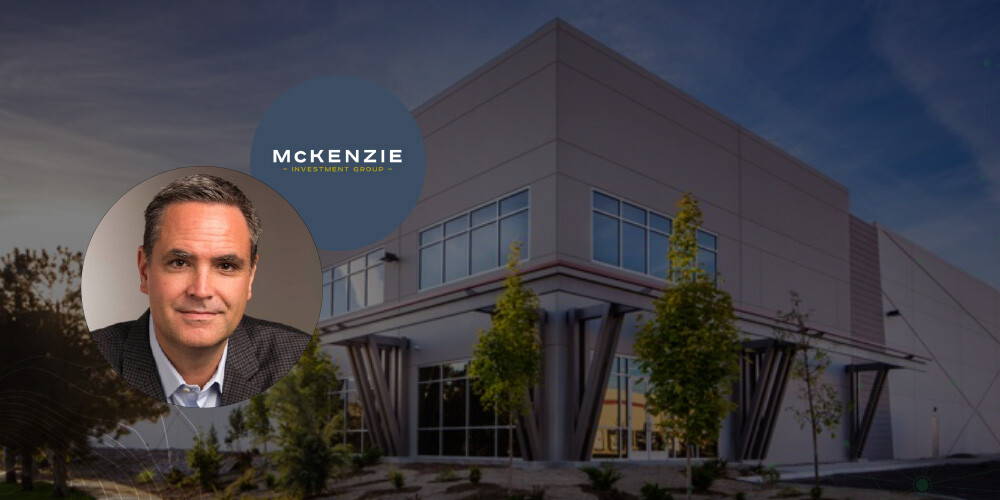
In our latest Q&A, we sat down with Todd McKenzie of McKenzie Investments to explore their strategic approach and insights into the industrial real estate market. Todd shares the firm’s history, strategies, and visions for future growth.
Q: Can you share key milestones and developments in McKenzie Investments' journey, particularly in the value-add industrial buildings sector?
A: My grandfather built the first tilt up warehouse in the state of Nevada in 1954 with McKenzie Construction. In the 1980s McKenzie Properties, through the second generation, started developing with their own capital. Throughout our 71-year history our industrial focus has always been on light industrial and mid-box sized product. Brien and I (third generation) at McKenzie Investments have opened up to outside investors and have continued developing the same type of industrial product (along with retail and office) since 2005 with 26 projects total, including 15 ground up developments and 11 value-add acquisitions.
Q: With the rise of e-commerce and the associated supply chain demands, how has McKenzie Investments adapted its strategy to capitalize on the increasing need for warehouse space?
A: Transportation costs are over 50% of an e-commerce company’s total operational costs. There has been a shift away from having a big box on the west coast and one on the east coast, for example, to multiple smaller locations throughout the US to serve customers faster and reduce transportation costs. This has been a positive in boosting demand for mid-box space. We continue to remain focused on small bay product, but now the drivers of demand in certain markets are greater than ever for this product type.
Q: With an impressive 61% IRR in realized gains from 2011-2022, what do you attribute this success to? How do you ensure continued operational excellence in your investments?
A: We know that a great product in a great location at a competitive price will do well over the long term. Our winning formula begins with discipline. Our past and continued success is due to being very disciplined in terms of location, land cost and site work cost on the development side and buying well below replacement cost with location discipline on the value-add side. In addition, our deep understanding of the asset through our operational structure and multi-generational experience allows us long term insight and vision to achieve best practices in operations, tenant improvements, retention, and overall efficiency.
Q: Given the migration of companies from primary locations like California and New York, how do you assess the potential and challenges in secondary and tertiary markets? What makes these markets compelling for value-add industrial investments?
A: The pace of quality supply has not been keeping up with demand for light industrial and mid-box spaces in many growth markets that are benefiting from migration from places like California and New York. We look for population growth, e-commerce drivers, and manufacturing growth as a trio of demand drivers when looking at secondary/tertiary markets. The supply/demand imbalance in certain markets has created upward pressure on rents, with some owners not aware of market rents and replacement cost. We look for these inefficiencies or poor management to find opportunity in value-add.
Q: Looking ahead, what are your growth plans for McKenzie Investments? Are there any specific regions or sectors within the industrial space that you are targeting for expansion?
A: We are currently targeting Reno, Las Vegas, Phoenix, Orlando, and south Florida for opportunities. These markets have population and job growth, e-commerce desirability, and manufacturing growth. All three demand drivers we look for, and on the supply side these markets have very low light industrial and mid-box supply.
Q: With transportation costs on the rise, how is this influencing your investment decisions and the locations you prioritize for industrial properties?
A: The trend away from centralization of distribution and toward multiple distribution points is critical because of the rising costs of transportation. There are 33 locations throughout the US that can fulfill 90% of e-commerce demand within the same day and 79% of these locations are in secondary/tertiary markets. We overlap these markets with markets showing high population and job growth (typically located in business-friendly states with high quality of life), and manufacturing growth to target our markets.
Q: For potential investors, what makes McKenzie Investments a compelling choice in the current market? How do you communicate the value proposition of investing in industrial real estate in secondary and tertiary markets?
A: We are vertically integrated operators with in-house development, construction, and management with over 19 years of experience. The ability for us to directly source deals can provide a significant performance boost versus sourcing and working through local sponsors. Rather than paying two layers of performance fees (one to sponsor, one to fund manager) our fund only has one layer of performance fees. This can result in 25% to 50% outperformance versus working through sponsors just due to fee layers given the same underlying asset performance.
The supply/demand imbalances in the secondary and tertiary industrial markets we are targeting are very compelling. The supply side has been largely overlooked by many developers in favor of big box developments for quite some time in these markets, while demand is steady through e-commerce drivers, population and job growth occurring due to long term migration trends, and manufacturing growth. Low vacancy, high rent growth, and lack of supply versus demand growth is creating opportunity in these markets within small bay product.
Q: What are the biggest challenges and opportunities you foresee in the industrial real estate sector in the near future? How is McKenzie Investments positioned to navigate these?
A: Workforce skill and availability continue to be the biggest challenge in ground up construction. In addition, the current financing environment has curtailed new construction. So with the overall supply side slowing down coupled with low existing vacancy and steady demand in small bay industrial product, the opportunity is fantastic if you have the ability to execute and can remain disciplined to pick your spots with either value-add or ground up. McKenzie is well positioned to navigate in this environment as we have a strong balance sheet with very low leverage that enables us to navigate and execute deals. Operating from strength is always an advantage, especially in more challenging times.
Q: Based on your extensive experience, what advice would you give to aspiring investors looking to enter the industrial real estate market?
A: Be patient until you see a great opportunity, start with something manageable, and be absolutely focused on location and quality.
To learn more about how TritonLake helps to bring differentiated investment opportunities like McKenzie Investments to our network of sophisticated investors, contact us at hello@tritonlake.com



